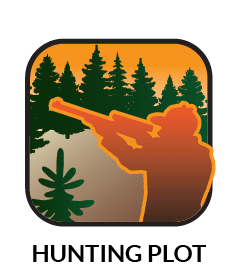Black Spruce
Plant Type: Evergreen, bare-root
Zones: 2-6
Soil Type: Loamy & Sandy Soils
Site Selection: Full Sun, Partial Sun, Shade
Mature Height & Width: 40-50' Height and 8-12' Spread
Growth Rate: Slow - 8-12" per year once established
Moisture Requirements: Average to wet soils





Black Spruce
Picea mariana
The Black Spruce is a medium sized tree with a narrow shape, like a church spire. This conifer exhibits dense foliage with very short, blue-green needles and brownish-gray bark that is thin and scaly. Until fertilization, the small violet-colored cones are in an upright position. As the cones mature, they will turn dark brown and begin to hang downward. The Black Spruce has pleasant year round color that makes this evergreen attractive even in the winter. This selection does particularly well in low or wetter areas although it will grow in upland areas too. The Black Spruce will do best in full sun but is very shade tolerant. Naturally deer resistant.
The Black Spruce is also known as the Bog Spruce or Swamp Spruce due to its natural occurrence in wetter soils. This is a great choice for those low or wet areas on your woodlot. Commonly associated in the wild with Balsam Fir, Paper Birch, Tamarack, White Pine, White Spruce and Quaking Aspen. Try this conifer out to diversify your forest acreage.
Fun Facts: Chewing gum is made from Black Spruce resin. Spruce beer was made by boiling the branch tips.
Common Uses:
- Naturalizing wet areas
- Good wildlife value
- Used for pulp and paper making
Many birds use the tree as a nesting site and small woodland mammals take shelter in its dense foliage. In low areas and bogs, Black Spruce boughs serve as perches for territorial male songbirds. Common wildlife species that inhabit spruce bogs include white-tailed deer, snowshoe hares, bobcats, black bears, mink, frogs, bog turtles, white-throated sparrows, ovenbirds, red-eyed vireos, Nashville warblers, and common yellowthroats. The Spruce Grouse depends on the Black Spruce for most of its habitat needs.





